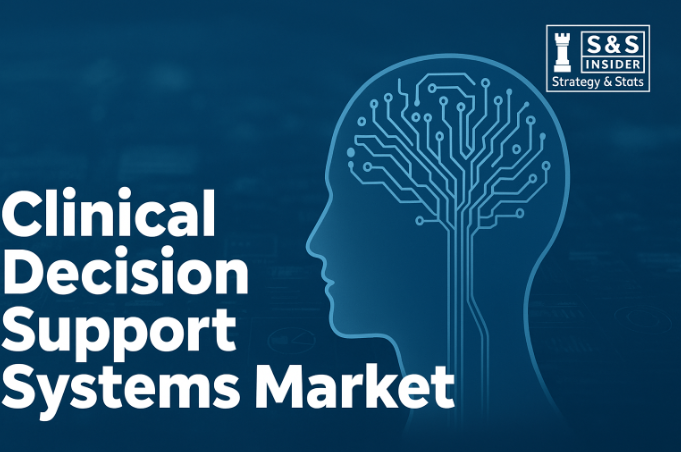In the high-stakes environment of modern healthcare, where clinicians face an avalanche of patient data and complex treatment protocols, a silent revolution is underway. Clinical Decision Support Systems (CDSS), once a niche tool for drug interaction checks, have evolved into sophisticated, AI-driven platforms that are fundamentally reshaping how medical care is delivered and managed. This transformation is not just a technological upgrade; it is a paradigm shift towards precision, efficiency, and enhanced patient safety, creating a multi-billion dollar market that is poised for explosive growth.
According to SNS Insider, The Clinical Decision Support Systems Market is expected to reach USD 11.59 billion by 2032, growing at a Compound Annual Growth Rate (CAGR) of 10.84% from 2025-2032. This robust growth trajectory underscores the critical role CDSS is playing in addressing some of healthcare’s most pressing challenges.
From Reactive to Proactive: The Evolution of CDSS
Gone are the days when CDSS was merely a pop-up alert for a potential allergy. Today’s systems are integrated into the electronic health record (EHR) and leverage advanced technologies like Artificial Intelligence (AI), Machine Learning (ML), and Natural Language Processing (NLP). They analyze vast datasets in real-time—from lab results and patient histories to the latest clinical guidelines and medical literature—to provide proactive, patient-specific recommendations.
“The shift is from a passive alert system to an active clinical partner,” explains Dr. Anya Sharma, Chief Medical Information Officer at a leading academic medical center. “Modern CDSS doesn’t just flag a problem; it suggests a solution. For a patient with sepsis, it can automatically calculate a SOFA score, prompt for specific antibiotics based on local resistance patterns, and recommend fluid resuscitation protocols—all within the clinician’s workflow. This saves precious minutes and directly impacts outcomes.”
Key Market Drivers: A Perfect Storm of Need and Innovation
Several powerful forces are converging to fuel the CDSS boom:
- The Burnout Antidote: Physician and nurse burnout is at an all-time high, exacerbated by administrative burdens and “alert fatigue” from older systems. Next-generation CDSS are designed with smarter, more context-aware alerts that reduce noise and streamline workflows, directly addressing this crisis. A study by the American Medical Association found that integrated CDSS can reduce the time physicians spend on administrative tasks by up to 30%.
- Regulatory Push and Value-Based Care: Governments and payers worldwide are aggressively promoting value-based care models, which tie reimbursement to patient outcomes rather than the volume of services. CDSS are instrumental in helping health systems adhere to evidence-based guidelines, reduce costly medical errors, and avoid preventable readmissions. The U.S. government’s “Meaningful Use” program, now part of the Promoting Interoperability program, has been a significant catalyst for CDSS adoption.
- The AI and Big Data Explosion: The ability to process and learn from massive datasets has supercharged CDSS capabilities. AI-powered predictive analytics can now identify patients at high risk for conditions like heart failure, diabetes, or hospital-acquired infections, allowing for early intervention. “We’re moving from decision support to decision prediction,” says a tech analyst. “These systems are becoming indispensable for population health management and preventive care.”
- The Post-Pandemic Focus on Healthcare Infrastructure: The COVID-19 pandemic exposed critical gaps in healthcare systems. The need for rapid triage, remote patient monitoring, and efficient resource allocation accelerated the adoption of digital health tools, with CDSS at the forefront.
Market Segmentation and Top Players: A Competitive Landscape
The CDSS market is diverse, with solutions segmented by product type (integrated EHR systems versus standalone platforms), application (drug-drug interactions, diagnostic support, care plan recommendations), delivery mode (on-premise vs. cloud-based), and component (software, services, hardware).
In this dynamic arena, a group of top players has established dominance through continuous innovation and strategic acquisitions. The competitive landscape is led by:
- Epic Systems Corporation and Cerner Corporation (now part of Oracle): As giants in the EHR space, they hold a significant market share by embedding comprehensive CDSS directly into their widely adopted platforms. Their strategy focuses on deep integration and seamless workflow.
- Elsevier B.V. and Wolters Kluwer N.V.: These companies leverage their vast repositories of clinical content, journals, and textbooks to power knowledge-based CDSS. Their strength lies in providing evidence-based recommendations that are continuously updated.
- Medical Information Technology Inc. (MEDITECH): A key player, especially in the mid-sized hospital market, offering integrated CDSS solutions that prioritize usability and clinician efficiency.
- Siemens Healthineers and GE Healthcare: These imaging giants are integrating advanced CDSS into diagnostic imaging, using AI to assist radiologists in detecting anomalies in X-rays, MRIs, and CT scans with greater speed and accuracy.
- Specialized AI Startups: A wave of agile startups, such as Tempus and Butterfly Network, are challenging incumbents with niche, AI-first platforms focused on genomics and point-of-care ultrasound, respectively.
Challenges and the Road Ahead
Despite the optimistic outlook, the path forward is not without obstacles. Data privacy and security remain paramount concerns. The high cost of implementation and maintenance can be a barrier for smaller healthcare providers. Furthermore, the industry must continue to combat “alert fatigue” by refining algorithms to ensure that only the most clinically relevant information is presented to the clinician.
Looking ahead, the integration of CDSS with telehealth platforms, wearable devices, and genomic data will create a truly holistic view of the patient. The future points towards a “learning health system,” where the CDSS continuously evolves based on real-world outcomes from millions of patient encounters.
As the market surges toward the $11.59 billion mark, one thing is clear: Clinical Decision Support Systems are no longer a luxury but a necessity. They are the intelligent backbone of a safer, more efficient, and more personalized healthcare ecosystem, empowering clinicians to make the best possible decisions at the point of care and ultimately, improving the lives of patients worldwide.

